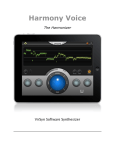Download PDF Version - University of Michigan Visible Human
Transcript
THE UNIVERSITY OF MICHIGAN VISIBLE HUMAN PROJECT (UMVHP)
QUARTERLY PROGRESS REPORT: Y3Q1
Brian D. Athey, Ph.D.
Asst. Professor
Director, UMVHP
April 9th, 2002
UMVHP: THIRD YEAR QUARTER ONE REPORT
TABLE OF CONTENTS
Knowledge Engineering Team.......................
PSC Status Report...........................................
Databasing, UIT, Anatomy/Nursing...............
IVoxel Browser...............................................
03
07
16
18
2
Y3Q1 REPORT
KNOWLEDGE ENGINEERING
TEAM
ACCOMPLISHMENTS OF THE QUARTER JUST ENDED
The principal accomplishments pertinent to our Knowledge Engineering team in
the quarter just ended were as follows.
1. An authoritative User's Manual for Edgewarp
On March 4, 2002, a draft of a complete User's Manual for the current
(1/2002) version of Edgewarp was posted to the internet as a set of 11
“chapters,” each a printable postscript file. The directory in which the manual
was uploaded also includes the current linux executable of the program and
several demonstration image volumes accompanied by annotated Edgewarp
scripts (save files, filmstrips, curves), of all the deliverables of this contract,
this is the one in greatest demand by colleagues variously local, virtual, or in the
extended community. The draft has not yet been critiqued by beta users, and
so
is
posted
only
to
our
private
web
site
ftp://brainmap.med.umich.edu/pub/fred/ewsh3.19.man/ and has not been
publicized in any form. When it is revised (see Plan 1 below), it will be uploaded
to the public site http://vhp.med.umich.edu, in the form of a tar file combining
program, test data, and scripts in one easy dataset. This draft of our manual
totals 102 pages. It carefully separates the tasks of generating Edgewarp
structures, displaying them interactively, and archiving them for future displays
or for more intensive editing operations. Under these three headings the
manual first reviews three general themes of the Edgewarp world -- operation of
the program (mouse and menus), geometry of the high-level windows, and the
specific conventions for control of pose (worldview) -- and then systematically
surveys all eight of the object classes that currently reside in the Edgewarp
world: images, reference trihedra, plane sections, filmstrips, landmark point
configurations, polygonal curves, triangulated surfaces, and thin-plate spline
grids.
Most of our other accomplishments during the quarter just ended were pursued
simultaneously with the preparation of this manual and have already been
reviewed in its pages.
2. Further exploration of labels and label systems
3
The previous progress report announced the creation of a labeling facility for
the right-hand (section) Edgewarp window. Labels appear at fixed screen
coordinates with a moving leader line connecting them to any point of the
section at which a preset curve (for instance, the centerline of a filmstrip) is
intersected. Over the quarter, we gained experience in the use of these
structures in free combination for insight into sequences of sections as they
tumble more freely in the space of Eve. For instance, we now understand how
labels corresponding to branching structures should be formulated: as
sequences of filmstrips sharing endpoints, together with the representation of
those endpoints as landmarks within the larger Edgewarp toolkit. We also
explored a variety of algebraic themes for labeling volumes lacking an axial
("filmstrip") structure using this method. Currently the most promising
candidate is a label structure taking the topology of a deformable sphere with
an equator and a small number of meridional great circles traced upon it.
Changes to the Edgewarp program to handle this additional labeling type are in
progress.
3. A preliminary filmstrip classification
Filmstrips available at the time of our previous quarterly report included mainly
tubular structures such as vessels. We have formalized those structures along
with a broad additional range in a list reviewed in one chapter of the User's
Manual. The filmstrip types that are likely to prove of value in a variety of
pedagogical and informatic applications include, in addition to tubes, the
traverse of a brick by parallel planes, the traverse of a cylindrical region by
coaxial planes, the traverse of a plane curve by its normal and binormal planes,
and the traverse of a ridge curve by its normal and binormal planes. All five of
these flavors of filmstrip are explained in detail in the draft Manual.
4. A portable version of Eve
The full power of Edgewarp is clearest in application to the Visible Female, Eve,
at full resolution. But demonstrations of this power would often prove
frustrating for reasons entirely unconnected with Edgewarp's own operation, to
wit, constraints on the "last mile" of the internet connection linking PSC to the
demonstration site. To circumvent this frustration, we have prepared a version
of Eve that is entirely resident within the local site. The installation requires a
just-released version of Linux that handles the 7.1-gigabyte main data file
required. The impact of this version of Eve cannot be overstated. (For
instance, Cornelius Rosse immediately seized upon it as a candidate for the
4
visualization engine associated with his Protege-based ontology server at
Seattle.) It also makes possible the construction of filmstrips in parallel at sites
not particularly internet-capable, such as airplane cabins.
5. Pencils
A completely new Edgewarp display mode has been constructed whereby any
list of section planes can be displayed simultaneously in one 3D worldview
window. That list can be the entire keyframe collection of a filmstrip or instead
a series of disjoint planes at some distance intended to reveal multiple aspects
of anatomical organization simultaneously. This facility has been demonstrated
in an application to a 3D embryo image that will appear next month in The
Anatomical Record – The New Anatomist, the principal journal of imaginative
visualizations in contemporary anatomy. The name “pencil” is that of a similar
geometric structure in the classic nineteenth-century geometry of space.
Plans For Quarters Y3Q2 and Y3Q3
1. Correcting the User's Manual and uploading it to the project web site
Our highest priority is to disseminate the draft manual to a small list of beta
users, some concerned with Eve and others with visual resources of other kinds
(e.g., clinical thoracic imaging, embryo MR). Corrections, enrichments, and
additional examples for the manual will be assembled as expeditiously as
possible and the revised draft uploaded to the public site
http://vhp.med.umich.edu as soon as possible. We anticipate a certain load of
queries, not always worthwhile, as a result of this posting.
2. Repackaging of the User's Manual in HTML
To ease access to the manual, and in particular to ease directed retrieval, an
alternate version of the manual will be prepared that takes the form of html
rather than postscript files.
3. Porting EWSH3.19 to Mac and Windows environments
As we write, the current version of Edgewarp has been ported to Macintosh
platforms running the MacOS10.1 operating system. The port is not complete,
in that performance is enormously slower in that operating system than in the
5
current preferred Linux environment spite of the superb Mac CPU. Work
proceeds to track down the bottlenecks in this implementation -- they seem to
center about network issues, not CPU or graphical display. When this port is
complete and the issues involved are more effectively understood, a second
port will begin, to Windows 2000 and related platforms. These can be expected
to be more difficult, in that control of the machine is less extensive under
Windows than under Linux.
4. Save file compatibility with VB tracing workbench
To expedite the segmentation computations on which we are about to embark
(see below), it will be necessary to combine the navigation capabilities of
Edgewarp with the tracing modules of Mr. Pomerance's browser VB at PSC. We
determined that the linking mechanism would be Edgewarp's existing capability
of archival files for filmstrips. PSC has committed to a VB module that will read
the current Edgewarp film file format and convert it to a sequence of scenes in
the VB windows from which outline tracings can expeditiously be made. In this
way, the contours that seed the segmentations to follow will be optimally
informative as a configuration.
5. From sampled surfaces to more authoritative segmentations
The radiation of segmentation styles away from “tubes and blobs” has been
recast as a two-phase process. In the first phase, sections through structures
are traced as lists of contours (lists of lists of points) in VB, just as at present
except that they will be filmstrip-driven for maximum informativeness. In a
second phase, intended for prototyping during the remainder of this contract
year and a major theme of the years to follow, contours and associated surface
normal directions will be treated as structured samples from a distributed nonstationary process whose level sets are the "true" boundary of the structure in
question. (This is different from the current implementation of surfaces, in
which the same contours and triangles are treated as actually _on_ the surface,
an assumption that is demonstrably false in most regions of the volume of Eve.)
Using a variety of sophisticated tools, these samples will be extended to a
topologically complete representation of the complete boundary wherever
possible, and surfaces to be rendered in Edgewarp, VB, and elsewhere, will be
renderings of these automatically completed boundaries, not the original handtracings that seed them. Algorithms for the extension of traces to complete
surfaces include neural nets, quasilinear local signal detection methods,
methods based on Morse theory of gradients in RGB space, and several others.
6
The resulting surfaces will be collected in libraries, labeled with the appropriate
Edgewarp auxiliary structures, and released to our pedagogical testbeds for user
exploitation and evaluation.
In addition, the following deliverables, originally described in the Y2Q4 report,
are still expected for nearterm quarters:
6. Compressed chads
Early in the next quarter a new chad server is expected to come online from our
PSC site. The server will supply Eve's contents at a variety of rates, under
client (browser) control, corresponding to either lossless or lossy conditions,
and Edgewarp will know how to use this facility for optimum user service.
Compression will be necessary for supply of voxels from the expected
rescanning of the original Eve films at 100u resolution, for instance; the new
data set will be too large to reside locally.
7. A filmstrip library
With the porting of EWSH3.19 and the dissemination of an authoritative
manual, it is possible to reassign the task of filmstrip production as routine
rather than experimental. Working with Dr. Bookstein, a small number of
anatomists and anatomy instructors will assemble a library of filmstrips
corresponding to one or more of the usual teaching modules at our medical
school. For instance, a set of about 40 such filmstrips, all displaying the same
branching .cur structures, could implement a tour of the major arteries of Eve's
pelvis. Specific curricular content of this task will be determined in
consultation with the faculty of our anatomy testbeds.
8. Alternative interfaces
The “pencil” visualization of multiple planes is the first in a series of alternate
Edgewarp interfaces that strip out inessential controls from the user's desktop
in order to ease interactions with those remaining. Another of these,
implemented by Alex Ade, eliminates the landmark features of Edgewarp,
leaving pose controls and filmstrip playback; this is suited to classroom use by
novices. Over the next quarter, we intend to develop these and additional
interfaces further and study their reception by users at different levels of
sophistication.
7
YEAR 3 QUARTER 1
PSC VISIBLE HUMAN SUBCONTRACT STATUS REPORT
1. Description of progress towards completion of quarterly milestones and
deliverables:
Primary areas of progress during the quarter include PSC Volume Browser
development, surface model construction, volume data services and networking.
Volume Browser:
Volume Browser developments since the December demonstrations and Y2Q4
report fall into three general, overlapping categories; optimizations and
extensions of core functionality, interface design, and new features.
A. Optimization and generalization of the core visualization routines has
continued. As a result, users experience a faster, more responsive interface.
CPU time profiles from user sessions were used to identify the most active code
regions. A number of routines were restructured to reduce work by
synchronizing to network and display rates. At the same time additional
restructuring is taking place for network & data decompression processing in a
separate computational thread to minimize the impact on screen update rate.
This work has uncovered and repaired several explicit problems and latent bugs.
B. The PSC VB user interface has been revised to improve its efficiency of use.
At the December demonstration of the Volume Browser, the PSC-developed
cross-platform user interface widgets were not fully integrated into the
browser. This integration proceeded by steps and has now been completed.
The old flying panel widgets were removed once all of their functions were
taken over by their new replacements. A substantially streamlined and flexible
user interface is the result and there is fertile ground for further planned
improvements.
At the December demonstration, functionality of the 3D, or context, window
was limited to a virtual track ball, optionally centering the volume on the plane
and zoom. There were new additions of buttons to automatically align the 3D
view to the sagittal, coronal, transverse, and any off-axis view plane. A viewing
mode which locks the 3D view to the slicing plane window has been added. This
affords a 'view of the orientation volume with respect to the slice' in addition to
the already implemented 'view of the slice orientation with respect to the
8
volume'. Toggling between these two views for comparison is also supported.
A secondary orientation indicator was added to the 3D window to ease the
understanding of the rotation of the view at high magnification.
C. New visualization features were added to the browser to support easier
manipulation, navigation, and segmentation of the volumetric and surface data
sets. These features feed back into the interface design decisions, which
influences core optimization and enhancements. At the request of the
Edgewarp team new functionality is now being added to PSC-VB to read
Egdewarp's 'sav' and 'film' files. The overall design of VB has been moving
toward symmetry of functionality between the 2D-oriented slice window view
and the 3D-oriented context window view. It is hoped that the added
symmetry will serve to increase ease of use and reduce the learning burden of
users since concepts and controls transfer between windows. Symmetry of
function should also provide for transparently viewing the data in whatever way
is most natural for the user.
Surface model construction:
Surface model construction continues to be the most difficult area. Substantial
progress has been made in designing appropriate tracing methodologies and
surface reconstruction algorithms for building surfaces of structures present in
the VF CCD dataset. The primary objective for the completed quarter was to
evaluate as many published surface reconstruction algorithms as possible, with
respect to four of the (many) unique characteristics of our own surface
reconstruction problem:
A. The initial input to the reconstruction algorithm is manually generated in the
form of arbitrarily oriented polygonal and/or curved “contours”.
B. We need to use currently available input data.
C. We have an opportunity to trace new contours which are suitable for input
to an appropriate reconstruction algorithm, and
D.
The resulting surfaces will be passed to a semi-automated color
segmentation algorithm for further refinement and/or returned to the tracer as
feedback to indicate areas which require additional tracing information.
In light of just these factors, we have arrived at the following two conclusions:
9
A. Some of the existing contour data is not amenable to typical point or
(parallel) slice-based surface reconstruction algorithms, so we will have to
handle the data separately from (but in parallel with) the ‘primary’ surface
reconstruction effort.
B. The current method of tracing contours is sub-optimal with respect to the
simplest possible approach for generating a ”reasonable” initial surface
approximation. In particular, it is counter productive to trace contours whose
normal and curvature do not at least approximate the surface normal and
curvature along the chosen curve path. (Note that this is one of two primary
problems with faithfully reconstructing surfaces from planar slices; the other is
the varying density of data within and between contours).
With respect to (A), we are working on ways to “repair'” some of the
Photoshop data for which a reasonable surface could not be generated due to
anisotropic density of the constituent point set. In several cases, it seems
possible to algorithmically reduce the per-slice point set density in an effort to
essentially smooth a “density function” defined over the points. This new point
set could then be passed to ‘cocone’ (a successor to ‘powercrust’), for
example, which uses the point set to approximate surface normals
automatically, and consequently extract a surface interpolating the new point
set. It may then be possible to re-introduce the missing points into the coarse
surface so that ‘important’ features are respected.
A primary consequence of observation (B) is that turnaround time for new
surfaces, even complex surfaces, generated by a trained segmenter could be
drastically reduced since -- compared to the current approach – much less
information is needed to generate a geometrically and topologically reasonable
initial mesh which interpolates the contours. Given contours which locally
approximate the surface curvature and (more importantly) the surface normal,
it is straightforward to topologically extract regions of the target surface. An
initial surface can then be geometrically fit to these regions using a reasonable
algorithm for fitting a surface to the face of an embedded planar graph. (The
other choice -- generating a dense point cloud on the target surface by tracing
contours -- has been shown over many previous discussions to be undesirable
for several reasons.) However, this approach has its own difficulties, such as
the necessity to specify topological incidences among contours without
resorting to toleranced geometric intersection tests. As in (A), some care will
therefore be needed to ensure good output.
10
The fundamental condition that the input contours at least approximate the
local surface normal is not demanding on the tracer with the new tools currently
in development for the segmentation capability of the Volume Browser. In the
following months, we will focus on the following:
A. Training segmenters to generate “good” initial contour data to pass as input
to a surface reconstruction algorithm;
B. Implementing the algorithms to reconstruct surfaces from both the
Photoshop data and new contours generated by the segmenters; and
C. Augmenting the Volume Browser with tools to simplify segmentation in
concert with our surface reconstruction algorithm.
Volume data services:
A great deal of work has gone into improving the volume data service and
particularly its compression aspects. This has been done while maintaining the
existing service on a 24/7 basis. The volume service is critical because it is the
primary network and performance intensive part of this project.
It is interesting to understand the current level of volume traffic by examining
the server log files. Over the 2 weeks prior to this report our primary server
“vh.psc.edu” delivered ~47Gbytes in the form of ~30Mchads spread over 2007
user sessions. Therefore the average session retrieved 24Mbytes or 15,000
chads. This is somewhat misleading because of the large number of sessions,
~80%, which are short PSC internal development sessions. Aproximately 13%
(259/2007), of the remaining sessions originate from the Michigan team. Many
of these show a much larger data use and much longer connect time. We
presume these are the anatomy segmentation users. They also show bursts of
activity followed by relatively long pauses. We infer that this is navigation
followed by close inspection or manipulation of a single view. These large
sessions often range from 200Mbytes up to 1.2Gbytes in the largest single
session. We believe the very longest of these was for filmstrip development.
We currently have two additional backup volume servers in operation. These
are the SUN machine “gibson.vhp.med.umich.edu” located at Michigan and the
Itanium “it.psc.edu” at PSC. Since these are only reached by special request or
by fall over if the primary server is down their usage is very low. The SUN only
11
had 326 sessions since that server was installed on Oct 3, 2001 and the
Itanium only had 425 sessions over a similar period. Nearly all of these can be
identified as server or browser development sessions.
More detailed logging in the forthcoming server release will let us probe these
user patterns in more detail. The current reason for tracking and analysing
usage behavior has been for simulated performance exercises to help with
server development. In this role, additional programs query our test servers to
establish their ranges of performance under load while trying to mimic
reasonable access patterns.
To understand the volume delivery requirements in context, a very dynamic PSC
VB session lasting 10 minutes of constant travel to locate and tour the optic
nerve followed by bladder to kidney ureter traversal followed by trading the
entire length of the spine consumes about 250Mbytes with a reasonably
continuous data rate around 3.3Mbits/sec and no significant delays from the
uncompressed service which is about 250 chads per second. This is sufficient
to present mostly full resolution visualization with a fall back to 1/2 or 1/4 only
apparent during fast moves.
Both the uncompressed and the new compressed service are able to deliver
almost the same data rates in bytes per second but the compressed method,
currently ~3:1 lossless, simply delivers more usable chads in the same number
of bits. Therefore the previous tour when performed with compression will
reduce to about 1Mbits per second which is unloaded cable modem speed.
Under ideal circumstances we have seen rates from vh.psc.edu over local PSC
machine room connections in excess of 800Mbits/sec with large MTUs. (see
https://vhserv.psc.edu:8443/docshare/index.cgi/Perf_test/vh_gige.html)
In principle this says one could support ~240 users in uncompressed mode and
nearly 800 with the 3:1 compression. In reality however, the sustained network
rates with the small MTU size that is supported over the long haul typically
produce only 200Mbits/sec and the current external link between the PSC
machine room and our PSC offices is limited to 155Mbits/sec. This translates
to 45 users uncompressed and 150 with the compressed service.
To show that the delivery rate is really limited by the network and I/O system,
local simulated runs on vh.psc.edu itself without passing over an external
channel are able to process ~3Gbits/sec per CPU. Since this is a 4 processor
machine the actual CPU and gives 12Gbits/sec which could, in theory, drive
12
~3,500 uncompressed users or 12,000 compressed users. Clearly this is not
really feasible with current network connections and our particular installation
but it does show the potential of our high performance in-memory approach
which avoids all disk bottlenecks and nearly all service time computation. Even
the most pessimistic interpretation of these measurements shows that we
should have little difficulty with the original target of 40 simultaneous users
connecting to the ES-40 server. Of course further improvements to provide
higher lossy compression levels in addition to the lossless mode only improves
this result. Several other significant conclusions are that individual clients
certainly do not need anything beyond a 100Mbit/sec connection to take full
advantage of the volume service. The real question for good interactive
behavior is network latency rather than bandwidth which is also the reason for
avoiding disk seek delays.
In addition to network delivery, compression provides the basis for effectively
keeping the entire data set in memory. On of the primary critera for the choice
of the Alpha based 64 bit ES-40 is the use of 64 bit addressing to quickly
access large data sets in memory. The current Visible Female data set reduces
to about 2.7Gbytes of compressed data in memory when one includes the
multiple resolution levels and all of the data structure which holds it together.
This is coming close the very special 2Gbyte level. At 2Gbytes it would be
possible to use a 32 bit server architecture such as a PC. The benefit of course
would be much lower unit cost and inexpensive commodity memory. Even
though the overall performance would not reach the levels seen with the ES-40
it should be sufficient for ~20 users. Therefore there is incentive to push the
compression ratio even though when it does not translate to more users from
the current server. Below the multi-user level a disk based single user approach
which has been demonstrated with both EWSH and PSC VB avoids the network
entirely but does not scale to larger data sets.
Several factors are being examined to push the lossless compression to reach
the 2Gbyte level. Although the current method seems to be signal noise limited
there are some remaining spatial redundancies which are not used in the current
wavelet. These produce patterns of non random codings especially around high
contrast edges. By analysing the structural organization of these patterns is
appears there is roughly another 30% gain potential which would be enough to
squeeze under 2Gbytes. This result is being verified now for possible
incorporation with the bundled release described later by using massive
compute search of the coding parameters to optimize the coding tables but still
operate with a simple Huffman entropy coder rather than an arithmetic coder.
13
This is significant because of the extreme difference in decompression CPU
time. The ~2.5% gain in compression given by arithmetic coding results in
almost a 10:1 increase in client side decoding time in a situation which is
already CPU limited for screen updates.
As work progresses on very high compression ratio lossy methods another
factor which comes into play is the desire to maintain at least a 10:1 ratio
between the size of requests sent to the server and the size of the data
coming back. This is critical for low bandwith client links such as cable modems
or wireless. If this becomes an issue it is a relatively simple matter to compress
the request stream.
See the section 4 goals below for further discussion of the compression bundled
release.
A small amount of work was done during the quarter towards preparing a
reduced resolution raycast projection volume. This is a pseudo volume which
trades the depth axis of the memory volume for use as a rotational viewing axis
for ray projections. It will be viewed using an adaptation of PSC VB.
Networking:
We have continued to use our involvement with the Web100 project to improve
the effectiveness of the existing network interface. Testing of Web100 with
our Visible Human application has helped lead to a stable public release of
Web100 tools on February 28, 2002. In particular, tests on the volume server
machine, vh.psc.edu, helped to improve specific aspects of multiprocessor
support.
The Alpha 1.0. software has been divided up into two separate pieces, the linux
kernel patch, and a shared library with a set of utilities, called “userland”.
Further improvements were incorporated into the Alpha 1.1 release on March
18, 2002. The current software is supported on Linux base kernel 2.4.16, and
has been tested on both Intel and Alpha platforms. The software can be
downloaded from the web page http://www.web100.org/download.
Other:
Aspects of our work were presented at the First SIAM Conference on Imaging
Science held in Boston from March 4-6. Art Wetzel gave the leadoff
14
presentation “Retrieving Eve, Chad by Chad: A Multiuser Environment for
Viewing Visible Human Data” in a session “The Mathematics of Adam and Eve”
hosted by Fred Bookstein. This provided an overview of the Visible Human
project and some mathematical aspects of representation and compression. It
also gave a nice lead in to D.B Karron and Jim Cox’s “The Leveling of Eve: Digital
Morse Theory of Isovalued Surfaces in 3D RGB Organ Rendering” and Fred
Bookstein’s “Navigating Eve: The Applied Geometry of Fortuitous Shape
Descriptors”.
2. Problems encountered during this quarter:
A. The major problem during the quarter continues to be difficulty of surface
production from manual anatomy markup and labelings. The anatomy team
reports trouble getting good visual feedback and is not entirely satisfied with
the quality of some of the current mesh results. There has also been a backlog
of manual contour data which had not been sent to PSC for evaluation and
surface construction. This is a severe problem since some of that data is not
adequate quality or density for decent model production. Manually shifting
through this data to sort out the multiple structures they represent is also a
time consuming activity which eats into the time for development of planned
features that will reduce the need for manual intervention and such dense
manual segmentation in the first place.
B. Although we’ve had no problems with the major server hardware we have
run out of space for processing and installing additional large data volumes such
as the 70mm male using the current data build process. We had planned to
simply remove one of the old data sets to bring this up but this was not
possible due to the continuous demo requirement. This also caused us to delay
installation of the last set of Web100 kernel patches at the server. These were
not critical as we've been able to use the time to work on other parts of the
project.
C. A grapics compatibility with the Mac OS/X environment was uncovered which
prevents window popup and hiding from operating correctly. Therefore, the
current Mac release of PSC VB behaves slightly differently from all the other
platforms.
D. We performed a “simple” memory upgrade on several of our team’s PC
workstations but ran into problems with slightly flakey memory. This took
several days to fully identify and caused the temporary loss of some data files.
15
3. Resolution of problems:
A. Resolution to difficulties in surface construction is an ongoing activity which
is discussed as the top goal in the following section 4. We have an active
ongoing discussion between groups to work out several solution approaches.
We continue to work on the time allocation issue.
B. We’ve taken several actions to resolve the space problems while
simultaneously maintaining service. First, we’ve replicated the primary visible
female service on a SUN machine at Michigan as well as an Itanium here at PSC.
This also entailed modifying the PSC Volume Browser to automatically search
for an available server when it starts up by cycling through the sequence
“vh.psc.edu”, “it.psc.edu” and “vhp.med.umich.edu”. In this way, we can take
the primary server off line and still have service coverage for most uses. This
has actually been in place for a number of months. However, we realized that
some of the secondary services had not been replicated. We have now
reproduced the voxel identity service and mesh service on two other machines
at PSC and are fixing a byte ordering problem so they can also be replicated at
Michigan on the SUN. Secondly, we are revising the volume data build process
to use less space. In principle the process only requires space for one full
uncompressed data volume plus the simultaneous compressed representation.
For convenience in processing as a series of separate steps, the existing
process actually uses three times the full volume space plus the compressed
representation. The replacement process is considerably more complex to
implement but will eliminate the overhead. Finally, we’ve also ordered additional
disk space for “vh.psc.edu” so that we can continue to run both the old server
and the new server and expanded data sets at the same time. Once the new
services are fully tested we will replace the backup services on the SUN and
Itanium machines with the new versions.
C. A small program which demonstrates the Mac bug, but which runs correctly
on all other platforms, was written and sent to the Apple Developer Support
group. We were very pleased to receive a response from Apple within a few
weeks acknowledging the receipt and reproducibility of our bug report. They
also stated that they would direct us to download a test fix when it becomes
available and incorporate the fix in Apple’s next major OS release. However,
there was no firm projected date.
16
D. Although this intermittent memory problem was difficult to confirm and cost
us some lost time the solution was simply to return the memory and replace it
from another vendor.
4) Goals for the next quarter & action plan for their completion:
Our top goal is to improve the segmentation and mesh generation process by
better coordination with the anatomy team and aggressive implementation of
improved tools for manually guided segmentation using PSC VB. Although the
Insight Toolkit has some components which could be useful in this area we have
found the ramp up time to use its complex coding style is too long for our
current needs and its processing mechanism restricts the size of volumes more
than we can accept. Therefore, we believe it is best to stay with the current
plan to improve the tools we already have and particularly the segmentation
parts of PSC VB.
Some of the existing tools in PSC VB intended to assist segmentation are not
actually being used by the segmentation team so we need to improve the
training of their use and receive better reports of problems so we can
implement corrections. The primary existing tool to help with this is the
template match contouring we have called the “snap-to” operator. Control
parameter settings in the current version are not correctly handling some
surfaces which the anatomy team has attempted to produce. A number of
additional simple operators which have been deferred in place of other tasks,
will be completed during the quarter. These include flood fill and color driven
segmentation methods using linear color space partitioning, elliptical color space
carving and nearest neighbor color space clustering. Each of these works well in
some regions but fails in others so users will have to select those which work
best in particular situations rather than having just one standard solution.
The target by the end of the quarter is to have a working surface
reconstruction system in place to handle common “simple” surfaces, like tubes
and blobs, and some compound surfaces like branches. Non-manifold surfaces
will require new, substantially more complex techniques which we will examine in
the following months. A complete plan for final data preparation is being
written with the help of the anatomy team and the knowledge engineering
team.
The second major goal is to complete release of the new server which has been
in development and testing for some time. This includes a more elaborate
17
server data structure, multi-level compression (with the last level providing
lossless delivery), priority coding to provide drawing order hints to clients and
startup negotiation with clients to transmit data set parameters. Although this
includes quite a number of new components, which could in principle be released
one at a time, it is most practical to provide the external release as a bundle.
This is primarily due to our experience with the requirement for maintaining
continuous service and the difficulty of staging incremental steps which are not
compatible with current browser releases. For example, the earlier compression
server operating since the NASA demo last summer has seen relatively little
use, even from PSC, because of the incompatibility despite its reduced network
load.
This bundled release will take place right after the planned server OS, memory
and disk upgrade with our backup servers handling ongoing usage while new PSC
VB versions are distributed and fully tested along with a replacement “hop
server” to provide EWSH compatibility. The added disk space will also let us
provide the complete 70mm male data service rather than just the portion that
was shown in December along with our first attempt to deliver a browsable
raycast transparent rendition over a prescribed range of viewing angles.
There are a number of PSC VB changes which have to be released
simultaneously with the new data services. Besides the decompression module
the browser will accept “meta data” from the server to configure itself to the
characteristics of the particular data set. That is, the server will transmit a
description of the data set size, number of color channels, physical resolution
etc and the browser will adapt its internal data structures accordingly. This has
already been demonstrated at PSC by switching between several compiled data
descriptions which lets a user dynamically shift between a number of available
data sets without leaving the browser. Additional features are being added to
PSV VB at the request of the EWSH team to provide compatible “save file”
driven filmstrip playback mode. We do not plan to include the EWSH filmstrip
production interface.
We would like to perform a full up 40+ simultaneous real user test to confirm
the results of multiuser performance simulations. These users should be
distributed across the country with likely locations including PSC, UMich,
Stanford and the NLM. Ideally this should take place in late June and would use
both PSC VB and EWSH users running on the full range of target platforms (ie.
Linux, Mac OS/X, Windows). Since the stated target has been 40 simultaneous
users from a single server the host would be our high performance ES40 server
18
at PSC. This trial should be used as an instrumented dress rehearsal to collect
statistics and observe problems in preparation for a follow up run(s) near the
end of the project year. Network and other statistics will be used to identify
problems and bottlenecks. As part of the preparation for this test we intend to
release a version of PSC VB to a limited group of friendly users outside of the
immediate project who would be willing to participate in the user load test. We
also need to plan a realistic distribution of tasks to mimic the load produced by
an actual anatomy classroom situation rather than an artificially intense
exercise.
Finally, we would also like to perform a small 2 or 3 client test of remote
collaboration using both the collaborative feature of PSC VB as well as linkage
using the conventional NetMeeting method. The PSC VB collaborative method
is designed to avoid the performance delays inherent in the NetMeeting
implementation but may have other pros and cons. This test is intended to
investigate that issue to provide a data point for the collaboratory project at
PSC.
5) Next quarter needs:
We anticipate delivery of disk and memory for vh.psc.edu to handle the full
70mm male data in addition to the currently served volumes. This is on order
and should arrive shortly. This is also needed to release the new server and
reconstructed data volumes so that we have a fall back mode in case of
problems.
PSC has received a response from Apple Computer verifying our bug report
related to window popup and hiding behavior. Although we have the email
assurance that this will happen soon we do not have a firm date but believe it
should arrive during the next quarter. This is needed to produce a fully
compatible PSC VB release across all platforms. There is no workaround for this
problem other than to inhibit certain window popup and hiding operations.
We need to arrange real users and client machines for the planned 40 seat test.
This will require some substantial coordination of both people and machines so
we should pick a target date by the end of May for execution in late June.
Network routes should be probed to confirm correct operation ahead of time.
Similarly, all users should have a least some preliminary experience in driving the
browsers so they can be active rather than spending too much time figuring out
what to do next.
19
Y3Q1 REPORT
DATABASING, UIT, ANATOMY, NURSING
Description of progress to date and next quarter goals:
A. Building the VH lesson, on-line
The coupling of databases, VH-3D data, TA labels, multi-media material, and
collaboration technology for education is continuing, with the latest addition
being the nursing testbed curriculum prototype phase.
B. Building A Lesson:
Development of an on-line module for nursing class that involves all the
elements of the VH Knowledge Base is being developed.
Concept Map
20
The UIT team has continued to employ the content map scenario for the
building of lesson modules. For nursing students, additional features will be
added to accommodate the systemic-teaching paradigm of the nursing
profession.
C. Prototype Nursing Module: Female Menstruation Through Reproduction:
Placement of two dual boot PC/Linux systems in the School of Nursing, North
Ingals Building, was accomplished this quarter, with network upgrades and
installation of the Edgewarp and UMPSC browsers. Porting of the iVoxel browser
to a windows environment will be. Module development is based on present
Nursing coursework. Content available: VH Browser, VH Index Search, digital
images, digital multimedia, didactic, class notes, class outline (for sequencing).
Content to be generated: nursing terminology, quizzes, Edgwarp flythroughs
based on nursing requirements.
Plan of Action:
1. Material gathering
2. Design sequence
a. A series of pages will be developed following the nursing course
outline
b. Information content placed into the pages as
3: Design prototype
a. Exploration of content using Browsers and web pages,
4. Evaluation
5. Test deployment
a. Iterative Development cycle (with implementation for Fall 2002
target).
D. Visible Human Knowledge Base: Contoured Model Development
Preliminary negotiations with the Kendall School of Art and Design, Ferris State
University, for additional model development occurred during this quarter. Their
output will be directed by our core anatomist group. This test phase is in
conjunction with our desire to extend the use of Visible Human data and our
testbeds to facilities throughout the State of Michigan.
Tutoring of the core anatomist group in the production of edgewarp filmstrips
as guides in the tracing and 3-D model production by nonantomists will begin in
Y3Q2.
21
E. Work on the Anatomy Database:
The structure for the 7679 terms of the TA have been implemented into a
Java-based form, and Dr. Heping Zhao continues his translation efforts.
http://vhp.med.umich.edu:808h/kiosk/Tree/index.htm
Chinese input http://vhp.med.umich.edu:8080/kiosk/chinese/index.jsp
F. Collaboration Technology:
Investigation into the use of collaboration tools to enhance teaching and
research continues.
The University of Michigan School of Information supports
CourseTools/WorkTools (http://worktools.si.umich.edu/) and W o r k
Tools(CHEF): The CompreHensive collaborativE Framework (CHEF) initiative has
as its goal, the development of a flexible environment for supporting distance
learning and collaborative work, and doing research on distance learning and
collaborative work.http://chef.si.umich.edu
The Open Knowledge Initiative (OKI) based at MIT (http://web.mit.edu/oki/) is
defining an open architectural specification to be used for the development of
educational related software. Over the next quarter, the database team will be
determining how the OKI could be implemented into the UMVHP.
Y3Q1 REPORT
IVOXEL BROWSER, ALEXANDER
ADE
Progress Report
Efforts this quarter have been directed at enhancing the Web based viewer
(iVoxel) and porting Edgewarp to the Apple Macintosh platform.
Ivoxel:
The iVoxel viewer has been divided by function into three unique modules; they
are the “Volume View” module (for volume rendered scenes), the “Model View”
module (display of and interaction with anatomical models), and the “Slice
View” module (arbitrary 2D slices through the dataset). Modules may be used
individually or in combination as either stand-alone applications or embedded
within Web pages. Modules support both mono and stereo viewing.
1. iVoxel’s Volume View module now supports the addition of arbitrary clip
planes to the scene. Combinations of clip planes affords the user a volume
22
rendered view of regions-of-interest within the dataset. Clip planes are
interactive and under user control via the mouse for rotation and translation
(figs. 1 and 2). Up to 6 separate clip planes may be added to the scene.
Figure 1
2. iVoxel’s Model View module has been updated to support the caching and
display of multi-resolution models. Using a set of models at different
resolutions, iVoxel supports a “Level of Detail” display system that selects a
model at an appropriate resolution for its distance frim the viewer. That is,
models that are farther away from the viewer are rendered using their lower
resolution versus modles closer to the viewer which are at a higher relolution.
With this system, the viewer always sees the highest fidelity data when close to
the model. The “Level of Detail” system improves rendering performance by
reducing the scene’s total triangle count while always displaying the best view
possible.
23
Figure 2
3.
The Slice View module requests voxel data from the Pittsburgh
Supercomputing Center (PSC) server. Asynchronous downloading and caching of
multi-resolution streams is supported. Slice images are constructed on-the-fly
from the highest resolution data available. As the slice plane is moved through
the volume, image updates use a combination of cached and newly requested
data as necessary.
The iVoxel module set has been tested on Sun and Windows platforms. A
Macintosh version requires additional system libraries to be provided by Apple.
The Apple Graphics Engineering team has assured me that these libraries will be
available soon.
Edgewarp:
An Edgewarp port to Apple Macintosh OS 10.1 has been ongoing this quarter.
The initial port was successful (fig. 3), but requires hardware acceleration for
usable performance levels. Also, network transmission rates are unacceptably
slow. Both items will be addressed next quarter.
24
Figure 3
A modified Edgewarp GUI has been created for novice users. The new GUI has a
reduced button set that doesn’t include the digitizing tools (fig. 4). Buttons
may also show text labels that describe the button’s function.
Figure 4
25
Problems and Resolutions:
We are using Tenon’s X-Windows implementation for hardware accelerated
Edgewarp on Mac OS X. In the process, we have discovered a bug in their
implementation which causes unacceptable rendering artifacts when multiple
graphics views are used. A bug report and test case is in preparation.
Network transmission rates on the Mac OS X version of Edgewarp are unusually
slow. We are investigating this. Resolution may require tweaking and optimizing
TCP/IP settings, or modifying the Edgewarp networking algorithms.
Future Directions:
During year 3, quarter 2, we will continue to enhance iVoxel by supporting
spline based labels and animations. Currently, anatomical labels will be stored as
curves. To display these, iVoxel will need to interpret these curves and correctly
draw the label they represent in the scene.
We will also continue the Edgewarp to Macintosh port. First priority is to
address the problems described above. Secondly, we will work to make the Mac
version more “Mac-like” in its controls and look-and-feel.
26



























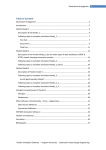
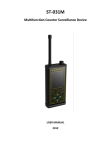
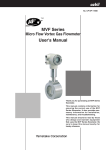
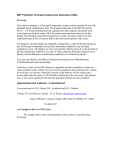

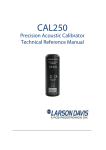
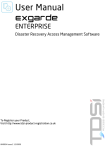

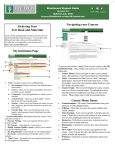
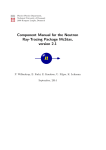
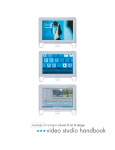
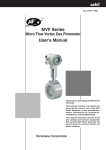
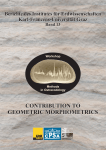

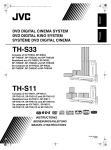

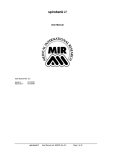

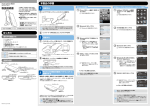
![取扱説明書[ES-WS33] (3.35 MB/PDF)](http://vs1.manualzilla.com/store/data/006696938_2-e22e15d7ecaf5462b5ad5fdfce511b03-150x150.png)
